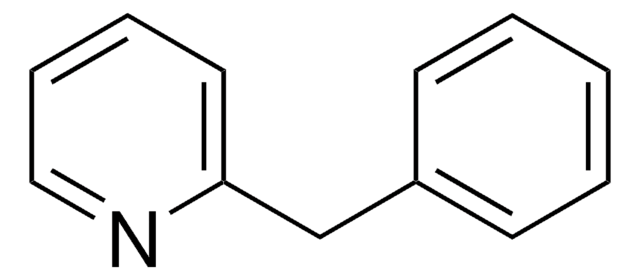8.41705
3-Mercapto-1,2-propanediol
for synthesis
Synonym(e):
3-Mercapto-1,2-propanediol, 1-Thioglycerol
About This Item
Empfohlene Produkte
Dampfdruck
<1 hPa ( 20 °C)
Qualitätsniveau
Form
liquid
pH-Wert
4.79 (20 °C, 10 g/L in H2O)
mp (Schmelzpunkt)
<-20 °C
Übergangstemp.
flash point 99 °C
Löslichkeit
slightly soluble >1000 g/L
Dichte
1.247 g/cm3 at 20 °C
Lagertemp.
2-30°C
SMILES String
SCC(O)CO
InChI
1S/C3H8O2S/c4-1-3(5)2-6/h3-6H,1-2H2
InChIKey
PJUIMOJAAPLTRJ-UHFFFAOYSA-N
Anwendung
- Polyhydroxyurethanes and Semi-IPN Hydrogels: 3-Mercapto-1,2-propanediol is utilized in the simultaneous formation of polyhydroxyurethanes and multicomponent semi-interpenetrating polymer networks (semi-IPN) hydrogels, enhancing material properties for diverse biomedical applications (Carbajo-Gordillo et al., 2024).
- Nanoparticle Functionalization: This compound facilitates the direct binding and characterization of enzymes onto iron oxide nanoparticles, showcasing its role in nanotechnology for biotechnological applications (Sidhu et al., 2024).
- Shape Memory Polyurethanes: Used in the synthesis of multifunctional polyols via a facile thiol-ene click reaction method (Lee and Kim, 2023).
- Low-Temperature Nanophosphor Synthesis: It is instrumental in the novel low-temperature synthesis of europium-doped yttrium oxide nanophosphors, utilized in near-UV light-emitting diodes, highlighting its critical role in advanced material manufacturing (Patwardhan et al., 2023).
- Phosphorylcholine monomer: 3-Mercapto-1,2-propanediol is used in the synthesis of functional phosphorylcholine monomer of 2-((3-((2,3-dihydroxypropyl)thio)-2-methylpropanoyl)oxy)ethyl phosphorylcholine (PC-diol)via a click reaction (Hao et al., 2023).
Hinweis zur Analyse
Identität (IR): entspricht
Signalwort
Danger
Gefahreneinstufungen
Acute Tox. 3 Dermal - Acute Tox. 3 Inhalation - Acute Tox. 4 Oral - Skin Irrit. 2 - Skin Sens. 1B
Lagerklassenschlüssel
6.1C - Combustible, acute toxic Cat.3 / toxic compounds or compounds which causing chronic effects
WGK
WGK 3
Flammpunkt (°F)
210.2 °F - closed cup
Flammpunkt (°C)
99 °C - closed cup
Analysenzertifikate (COA)
Suchen Sie nach Analysenzertifikate (COA), indem Sie die Lot-/Chargennummer des Produkts eingeben. Lot- und Chargennummern sind auf dem Produktetikett hinter den Wörtern ‘Lot’ oder ‘Batch’ (Lot oder Charge) zu finden.
Besitzen Sie dieses Produkt bereits?
In der Dokumentenbibliothek finden Sie die Dokumentation zu den Produkten, die Sie kürzlich erworben haben.
Unser Team von Wissenschaftlern verfügt über Erfahrung in allen Forschungsbereichen einschließlich Life Science, Materialwissenschaften, chemischer Synthese, Chromatographie, Analytik und vielen mehr..
Setzen Sie sich mit dem technischen Dienst in Verbindung.






